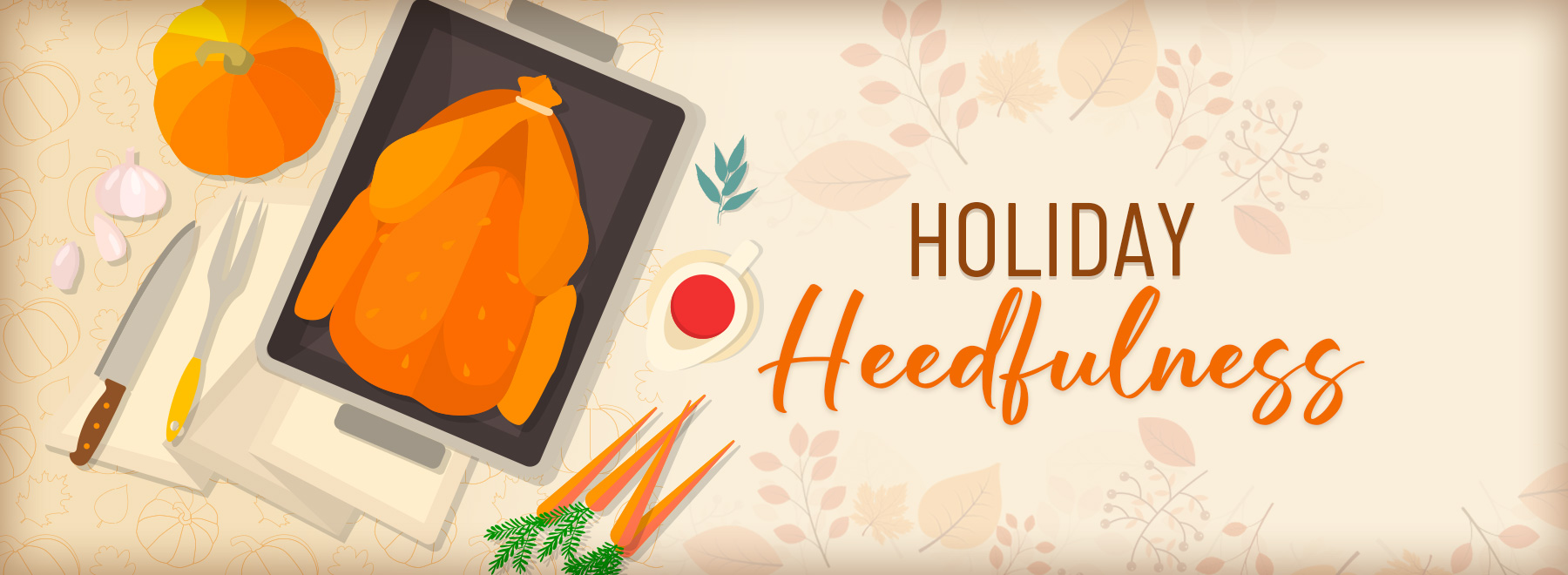Be thankful for these food-safety tips
Food that’s been mishandled or improperly cooked can knock the stuffing right of your Thanksgiving.
The risks come with many names – salmonella, listeria, E.coli, clostridium perfringens and on and on – but they all add up to food poisoning.

“Foodborne illnesses are more common than we think,” said Rebecca Butz, an instructor in the John D. Bower School of Population Health at the University of Mississippi Medical Center and a registered dietitian with the Myrlie Evers-Williams Institute for the Elimination of Health Disparities.
“One in six Americans reports a food-borne illness each year. That can mean everything from mild cases to severe ones that require hospitalization.”

For a food-safe holiday, Butz and Rebecca Turner, a registered dietitian in the Department of Preventive Medicine at UMMC, offer a cornucopia of tips, many of them centered on the Thanksgiving centerpiece: the turkey.
“Whether you’re cooking a whole bird or part of it, such as the breast, take steps to prevent food poisoning. Raw meats, poultry, and vegetables must be properly handled when prepping, cooking and storing for leftovers,” Turner said.
“Raw turkey and other uncooked meats and their juice can be contaminated with germs that can make you sick.”
— — —
RAW DEAL
People who get sickest from food-borne illnesses have a chronic disease or immuno-compromised, Butz said. “Also, people with diabetes, those who have had an organ transplant or liver failure, and children under 5 and adults over 65.
“That’s why it’s risky to do some of those things mom told us were fine.”
When buying a turkey, fresh or frozen, it’s best to let it remain true to itself: “In other words, don’t freeze it if you bought if fresh,” Butz said.
“If it’s frozen, the safest way to thaw it, or any other food, is to let it stay in the refrigerator. For refrigerator thawing, allow one day for every five pounds of weight. You can also use cold running water.”
Defrosting a turkey in the microwave is also an option, but not the top one, Turner said.
“It’s best not to defrost a fully frozen bird with running water or the microwave, Turner said. “Cold water and microwave thawing can be a backup plan if your bird is partially defrosted via the refrigerator.
“To finish thawing a bird in cold water, submerge it in its original wrapper in cold tap water, changing the water every 30 minutes.” For microwave defrosting, check your appliance manual, Butz said, but use it only as a last resort.
“Notice that ‘leaving it on the countertop to thaw’ is not on that list,” Butz said. “The temperature on the outside of turkey warms up faster than the interior of the turkey.” Food-borne illnesses love when you do that.
“The time frame that food can remain in the warm range is two to four hours,” Butz said. “So, after it’s thawed, you should cook it immediately.”
A raw turkey does not play well with others, Butz said. “Cross-contamination is easy. Keeping raw food away from ready-to-eat foods is important. You should also wash your hands after handling thawed food.”
As for washing off a raw turkey: “I don’t know where that came from,” Butz said. “That just increases the chances of splashing raw juices all over your counter or sink. There’s really no purpose in washing off raw meat.”
When you wash a raw turkey, bacteria can spread up to three feet away, Turner said. “And will linger for your guests to find.”
Once your bird is prepped and ready for cooking, Turner said, “set it aside and thoroughly clean all surfaces, utensils and wash your hands with soap and warm water for at least 20 seconds before touching other foods.
“And absolutely use separate cutting boards: one only for cutting raw meat, poultry and seafood; the other for ready-to-eat foods, like breads and vegetables.
“Consider buying cutting boards of different colors so it’s easy to remember which is for raw meat and which is for ready-to-eat foods.”
— — —
TAKING ITS TEMPERATURE
And now for migratory dressing, aka the stuffing. “If you’re filling the turkey completely with stuffing, you’re decreasing the area the heat can reach,” Butz said.
“So, the outside is going to cook faster and then you will have cold stuffing and dry turkey. You can always stuff the turkey after the dressing is done.”
The U.S. Department of Agriculture recommends cooking the stuffing/dressing outside of the bird. “Unfortunately, bacteria can survive in stuffing that has not reached 165 degrees F., leaving the door open for foodborne illness,” Turner said.
“Some people feel that stuffing has a better taste and is moister when prepared in the turkey, but be diligent that the thickest parts of the bird reach that critical 165 degrees F. to ensure food safety.”
The cook-it-until-the-juices-run-clear standard is “generally safe,” Butz added. “But cooking the turkey to 165 degrees is guaranteed safe.”
There is also a recommended minimum oven temperature for your flavorsome fowl. “The USDA reports it is not safe to cook any meat or poultry in an oven set lower than 325 degrees F.,” Turner said.
“At lower temperatures, meat stays in the Danger Zone (between 40 degrees F. and 140 degrees F.) for too long. Always check multiple areas of the bird to reach 165 degrees, focusing on the thickest parts of the breast.”
— — —
ENLIGHTENED LEFTOVERS
Once a turkey is cooked, how long can it roost on the countertop?
A fully cooked turkey can sit out for a maximum of two hours, Turner said, but that time should be reduced according to how hot it is – whether you’re eating inside or outdoors.
For instance, “if the temperature creeps above 90 degrees, limit the time that turkey sits out to only one hour,” Turner said.
“It’s important that you do not transfer it to the refrigerator while still warm. If pressed for time, you can cut the meat off the bone or the bird into smaller pieces before storing them in the refrigerator.”
Cool the bird or its parts in a shallow dish, Butz said. “Everything will cool quicker.”
Cooked turkey, other cooked dishes and gravy are safe to eat for up to three or four days if kept in a refrigerator set to 41 degrees F. or below, Turner said.
But be more cautious with people over 65, children under age 5 and people with chronic disease or weakened immune systems, Butz said.
“They shouldn’t eat turkey or dishes made from it more than two or three days after it’s stored in the refrigerator.”
The freezer, set at zero degrees F. or below, will keep them much longer – at least four months, Turner said.
In other words, you could reopen that Thanksgiving turkey after Christmas.
The above article appears in CONSULT, UMMC’s monthly e-newsletter sharing news about cutting-edge clinical and health science education advances and innovative biomedical research at the Medical Center and giving you tips and suggestions on how you and the people you love can live a healthier life. Click here and enter your email address to receive CONSULT free of charge. You may cancel at any time.



